Bea Perks meets some of the scientists subjecting our food's credentials to forensic examination
Gone are the days of reading the words ’olive oil’ in a recipe, and trotting down to the pharmacist for a very tiny bottle of ’Olive Oil BP’. Today, supermarket shelves heave under the weight of a bewildering choice of olive oils - from a fruity Ornellaia (’marvellous for salads’) to a light Ligurian (’ideal for deep-fried zucchini flowers’. yes, really). And it’s not just olive oil. There was a time when people bought, simply, ’beef’ or ’chicken’. Now you can choose where your desired animal lived, or what it ate (mountain reared, corn fed). And so it continues - where did the cow live that produced the milk used to make the cheese?
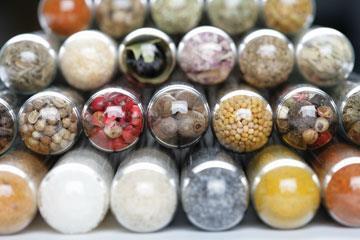
The big problem’, says food scientist Peter Berry Ottaway, a consultant at the UK Institute of Food Science and Technology, ’is that any high value ingredient has a risk of being adulterated.’ So how are the fakes wheedled out from the genuine - free-range, mountain-reared, organic - articles?
Ottaway’s work is a stark illustration of the lengths scientists must go to in order to prove, or disprove, a product’s authenticity. He once travelled to the Arctic Circle in search of cod and the plankton they eat - to determine if cod livers were the single source of a particular brand of cod-liver oil. ’It’s very expensive and there’s a huge temptation to cut it with rapeseed oil,’ he explains.
The fatty acid profiles for the plankton, cod, and rapeseed weren’t far apart, he recalls. But the picture changed when he looked at sterols. The sterols found in the Arctic plankton were the same as the sterols in the cod, but were not the same as the sterols in rape seeds. When he analysed the cod liver oil using HPLC he spotted ’there was something fishy - or not quite so fishy’ going on.
The alarm bells had rung in the first place because the amount of cod liver oil leaving the processing plant was miraculously greater than the amount of cod liver entering the plant. The oil turned out to be about 12 or 13 per cent rapeseed oil, says Ottaway.
The perfect crime
One of the greatest problems facing this branch of criminal investigation - food forensics - is that consumers can’t always tell when they’re being defrauded. The product might taste similar, will probably look similar, will cost about the same, and will not necessarily do the consumer any harm (apart from financially). For the same reason it’s difficult to say quite how widespread the problem is. John Spink, director of the Packaging for Food and Product Protection Initiative at Michigan State University, US, estimates the cost to the global food industry at $49 billion (£25 billion). ’In the UK, the Food Standards Agency (FSA) estimates the level of fraud at 10 per cent, equating to around $7 billion,’ he says.

Distinguishing pure from adulterated cod liver oil would certainly take an expert consumer, and even that might be a doddle compared with distinguishing pure from adulterated bee propolis. Bee propolis, for those not familiar with the stock of their local health food store, is a by-product of honey production. It is a wax-like substance that bees collect from buds, and then use as a sort of cement for hive maintenance. When not blocking out drafts in beehives, propolis is a popular food supplement or ointment ingredient. It is reputed to alleviate a long list of ailments including inflammation, viral diseases, ulcers, burns - the list goes on.
But the genuine article is not easy to identify. Propolis can be more or less any colour from green to red, and it is expensive - 25ml of a solution of unspecified concentration costs about ?10 - making it a fraudster’s dream. Bees have even been known to make fraudulent propolis themselves, sometimes exploiting window putty in place of plant buds. Forensic analysis of propolis has shown that the genuine article - not even meddled with by the bees themselves - contains distinct proportions of particular flavonoids (plant metabolites): a discovery that could help nail genuine fraudsters, and improve propolis quality overall by flagging up the window putty varieties.
Technological revolution
Fraudsters have capitalised on the variety and popularity of health products. One study instigated at the behest of Dutch trade officials discovered that a third of products purporting to contain pure aloe vera (a plant sap used to treat a wide variety of medical complaints) had been adulterated. The evidence for this particular study came from what was then a new chapter in food forensics: nuclear magnetic resonance (NMR).
Aloe vera comprises three main components: glucose; malic acid; and the polysaccharide acemannan, which is composed of a long chain of mannose monomers. On average, each mannose monomer ring has one acetate group attached to one of three available positions, explains German food scientist Berndt Diehl, who discovered that the NMR profile of these different acetate groups represented an exact fingerprint for aloe vera. ’Manipulation of this signal is practically impossible,’ Diehl wrote in a report of his findings back in 1998.
Today, NMR is just one of a long list of food forensics techniques you might expect to find in a CSI-style forensics lab.
Fingerprinting food
Earlier this year, Italian researchers reported their findings using the polymerase chain reaction (PCR) to study mozzarella. PCR is a molecular biology technique used to replicate and amplify a small fragment of DNA. In this case, it was used to detect and quantify rogue cow DNA in mozzarella labelled as being made from pure water-buffalo milk (R M Lopparelli et al, J. Agric. Food Chem., 2007, 55, 3429).
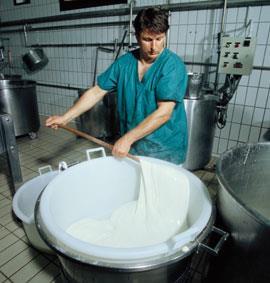
Buffalo mozzarella is a highly sought-after Italian product certified by the European Protected Designation of Origin (PDO). Mozzarella can be made from cow’s milk, but it wouldn’t get PDO certification and wouldn’t cost anywhere near as much either to make or indeed to buy. This has tempted food fraudsters to slip at least some cow’s milk into the mix.
Barbara Cardazzo and colleagues at the University of Padua analysed 64 commercially available ’buffalo’ mozzarellas by real-time PCR, and found that most of the samples were contaminated with cow’s milk. The researchers say that their PCR technique, looking for a cow milk-specific gene, is a marked improvement on the current control method, isoelectrofocusing of milk proteins (separating the proteins according to their net charge by passing them through a gel). This can generate inaccurate results if the cheese has been subjected to high heats - for example, when the milk is pasteurised.
But PCR also needs to be applied with care, warn researchers in the UK. Silvia Doveri and colleagues at the National Institute of Agricultural Botany in Cambridge showed that the genetic profile of olive oil isn’t necessarily the same as that of the olive fruit. It could be a serious problem for anyone trying to tell if their fruity Ornellaia extra virgin olive oil (about ?10 for 50cl) really did come from the 2000 olive trees on the Ornellaia estate in Tuscany.
A host of certification systems, like the PDO enjoyed by buffalo mozzarella, exist to prove the worth of olive oils - from PDO, to protected geographical indication (PGI) and traditional speciality guaranteed (TSG). They are important awards recognised by the European Union referring to the quality of the olive oils. ’Before such awards are given, regulations imply detailed rules on the [olive] varieties to use, the geographical area of production, and the methods of oil extraction,’ write Doveri and colleagues in a report of their findings (S Doveri et al, J. Agric. Food Chem., 2006, 54, 9221). ’As these labels reflect quality, products they are awarded to command price premiums.’
Plant paternity testing
Chemical analyses per se are not sufficient to verify olive oil authenticity, except in cases of adulteration with other vegetable oils, notes Doveri. So DNA markers - unique, short sequences of DNA that can be used to identify olive cultivars - are increasingly being applied to solve provenance issues.
There is a significant drawback to this, she says, because whole olive fruits are crushed in the milling process. The stone inside each olive fruit is an embryo, and has almost certainly been fertilised with pollen from another cultivar. ’Questions about paternal DNA on the genetic profiles need to be addressed before DNA markers can be used with confidence,’ she notes.
Doveri says her group was the first to compare the DNA in leaves, olives and oil from a single olive tree. What they showed was that DNA in a leaf from the olive tree didn’t match DNA in the oil. It’s not an insurmountable problem, she says, because certified oils that are grown in specific regions may well have a limited, specific, number of possible pollinators - in which case such analysis might further support an oil’s authenticity. But future analysis might be safer if restricted to specifically maternal markers - such as those found in mitochondrial DNA (which is only inherited from the mother).
Black or white?
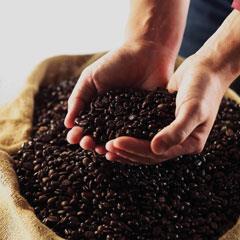
Another classic example of an expensive food product vulnerable to fraud is coffee, one of the most important food commodities in world trade, according to Gregory Tucker at the University of Nottingham, UK. The commercial coffee trade consists almost entirely of Arabica and Robusta coffee varieties, with Arabica considered the highest quality and, naturally, the most expensive. Arabica beans cost two to three times as much as Robusta beans and constitute more than 70 per cent of the world’s coffee production - so ensuring that inferior Robusta beans don’t get into the Arabica production chain is essential.
Most current methods to discriminate between Arabica and Robusta coffees fall under the analytical/instrumental heading, says Tucker. Pure varieties are distinguished according to profiles of analytes such as sterols, fatty acids and total amino acids. Mixtures are characterised using Fourier transform infrared spectroscopy. The beans contain different amounts of the two main coffee compounds -chlorogenic acid and caffeine - which have distinctive infrared spectra.
DNA-based analysis is new to coffee authentication, but Tucker and colleagues say their work on PCR analysis and lab-on-a-chip capillary electrophoresis offers a quick and straightforward method suited to routine coffee analysis.
Tucker’s team used PCR coupled with restriction fragment length polymorphism (RFLP), where amplified DNA is cut at specific sites along its sequence - using so-called restriction endonucleases - in order to determine, in this instance, particular coffee varieties. PCR-RFLP is a classic forensic technique, equally at home in murder cases and paternity testing as it is in food authentication. It is an essential component of DNA fingerprinting.
Tucker’s method combined PCR-RFLP with capillary electrophoresis to separate individual genes and quantify adulteration in green (unroasted) coffee beans. A genetic marker in chloroplast DNA, which is maternally inherited like mitochondrial DNA, was found to differentiate Arabica from Robusta varieties.
The forensic approach
Most of the above methods are targeted procedures, only applicable to one commodity and/or one type of fraud. But a pan-European effort is underway to develop more generic procedures for tracing and verifying food, by scientists within the Trace consortium, a €19m (£13m) European Commission initiative. ’The international team of scientists within the project are developing "food mapping" procedures that will allow provenance claims to be more easily checked,’ says Paul Brereton from the UK Department for Environment, Food and Rural Affairs’ (Defra’s) Central Science Laboratory in York, the co-ordinator of Trace. They are attempting to link key parameters in food with those found in the local environment. By studying the climate and geology, the scientists aim to predict what profile of parameters should be expected in a food of given provenance. It is then relatively easy to check if the actual profile of the food matches with that predicted.

Alongside food mapping, Trace is also producing spectroscopic and biological fingerprinting methods that can be used to verify food. The increased power of data capture and interpretation techniques developed in recent years allows atypical samples to be rapidly identified. This is ideal for a food verification system as it allows a more forensic approach to authenticating food. ’Rather than us having to know what type of fraud is taking place, we can now quickly look for differences between products and identify what is causing those differences...’, says Adrian Charlton, head of the NMR fingerprinting team at CSL and a key researcher in Trace.
Ten years ago there was much less media interest in food authenticity. But nowadays there’s a much more discerning consumer - who makes their purchases based on what Brereton calls ’quality attributes’. These might be attributes that the consumer cares about deeply, but they can’t always identify unaided, such as: provenance; production (GM, organic, free range); ethical issues (animal welfare, fair trade); and sustainability (food miles).
Brereton’s team recently developed an analytical method to identify corn-fed chicken - chickens that command a higher price as a result of their relatively luxurious diet. The method exploits the differences between the biosynthetic pathways that exist between maize (C4 pathway) and temperate cereals such as wheat and barley (C3 pathway). C3 and C4 plants provide markedly different 13C/12C ratios when measured using stable isotope ratio mass spectrometry. Comparison with a database of results from chickens fed differing maize diets provides an objective means of confirming that a chicken was fed on corn (maize).
The CSL has worked in this area for 20 years: ’15 years ago our main focus was in developing methods to prevent the [European] Commission getting defrauded through aspects of the Common Agricultural Policy - sugar mountains and wine lakes and all that - whereas the consumer is the focus now,’ says Brereton.
Working out whether consumers are being taken for a ride looks set to focus national and international authorities and relevant experts for years to come. The FSA alone currently spends approximately ?1 million each year on its food authenticity research programme. ’History has taught us that wherever there is a large price difference between two similar products and no objective means of checking is available, fraud can take place,’ he stresses.
So you might think that a professional food detective would religiously scan the supermarket shelves for reputable labels before buying. ’No, in terms of food shopping, I tend to be a sceptic,’ says Brereton. ’I buy based on what tastes good rather than what’s on the label.’



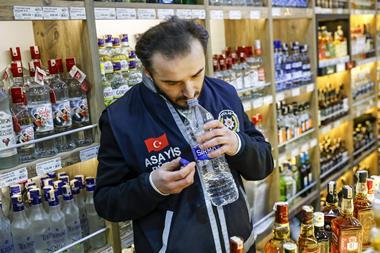
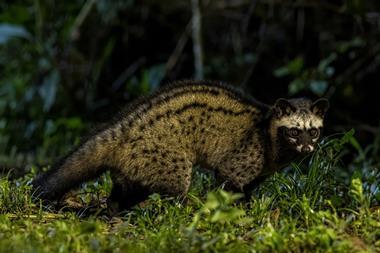







No comments yet